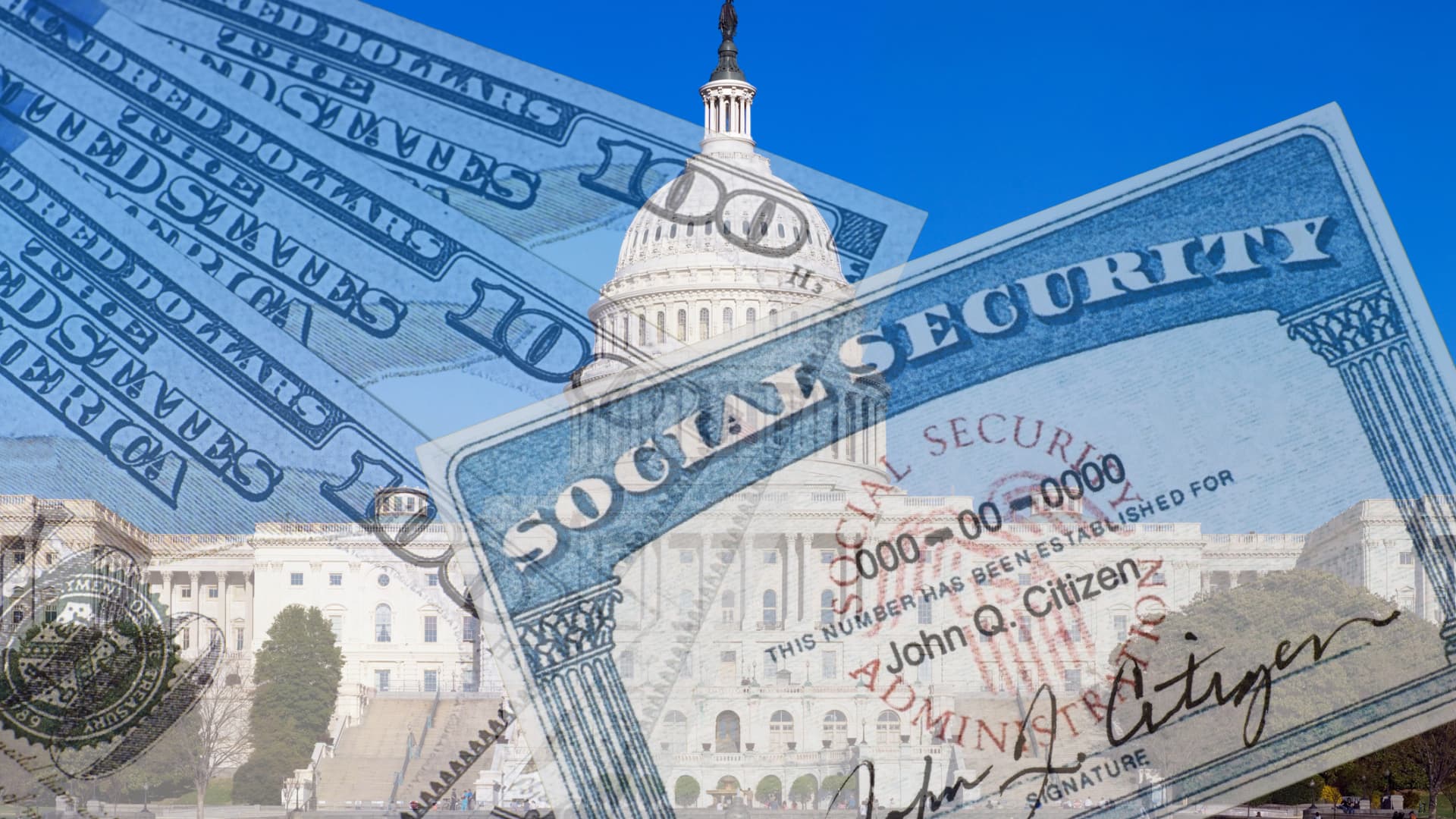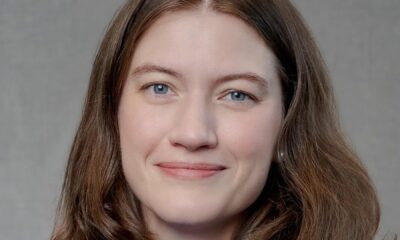Richard Stephen | Istock | Getty Images
New leadership has yet to be sworn in, in Washington, D.C. Yet Sen. Mike Lee, R-Utah, ignited a debate this week on the future of Social Security with a series of posts on social media platform X.
The program, which provides monthly checks to more than 65 million beneficiaries, faces funding issues that may prevent the program from paying full benefits in as soon as nine years.
“We were sold a dream, but received a nightmare,” Lee stated in the X thread on Monday. “It’s time for a wake-up call. We need real reform.”
More from Personal Finance:
Student loan borrowers may find bankruptcy harder under Trump
College enrollment falls 5% for 18-year-old freshmen
‘Dynamic pricing’ was a top contender for word of the year
Experts on both sides of the aisle generally agree it’s better to address Social Security’s funding woes sooner rather than later.
“It’s a system that requires a fix,” said Charles Blahous, senior research strategist at George Mason University’s Mercatus Center and former public trustee for Social Security. “Acting like everything is fine and that we can just ignore it for a few years would not serve the public well.”
Meanwhile, Lee’s post on Social Security — in which he said it is “almost fair to compare it to a Ponzi scheme that’s running out of new investors” — prompted mixed responses.
Elon Musk, who has been tasked with cutting government spending under President-elect Donald Trump, shared Lee’s post while calling it “interesting.” Yet Social Security advocacy groups were quick to defend the program they said has never missed a benefit payment in nearly 90 years.
Among the issues Lee identified is the mechanism for holding money used to pay benefits, commonly known as the “trust funds.”
“This money doesn’t sit in a nice, individual account with your name on it,” Lee stated in his X thread. “No, it goes into a huge account called the ‘Social Security Trust Fund.'”
What are Social Security’s trust funds?
Social Security mostly relies on payroll taxes paid by both workers and their employers for funding, according to a recent Congressional Research Service report.
But the program also receives money from other sources, including federal income taxes some Social Security beneficiaries pay on their benefits, reimbursements from the Treasury’s general fund and interest income from investments held in its trust funds.
That latter source — the trust funds — hold money that is not needed in the current year to pay benefits and administrative costs, according to the Social Security Administration. The money in the trust funds is invested in special Treasury bonds that are guaranteed by the U.S. government.
The interest on those securities is tied to market rates. The trust fund’s bonds are redeemed when they either are needed to pay benefits or they expire.
“The trust funds basically keep track of what workers have paid into the system,” Blahous said.
Social Security’s trust funds prompt headlines each year when Social Security’s trustees release their annual report on the program’s financial outlook.
President George W. Bush is shown paper evidence of US Treasury Bonds in the Social Security trust funds by Susan Chapman, director of the Division of Federal Investments, during a tour of the Bureau of Public Debt in Parkersburg, West Virginia on April 5, 2005.
Luke Frazza | Afp | Getty Images
The program’s two trust funds are legally distinct and generally do not have the authority to borrow from each other.
The trust fund used to pay benefits to retired workers — as well as their spouses, children and survivors, should they die — faces the soonest estimated depletion date of 2033, when just 79% of those benefits will be payable if Congress does not act before that.
Lee is not the first politician to question Social Security’s trust fund structure. In 2005, then President George W. Bush said the trust funds are the equivalent of government IOUs in a four-drawer filing cabinet. More recently, during a 2023 Budget Committee Senate hearing, Sen. Ron Johnson, R-Wisconsin, held up a photo of a filing cabinet when discussing the program’s funding.
“This is the Social Security trust fund,” Johnson said. “It’s a four-drawer file in Parkersburg, West Virginia.”
In response, Stephen Goss, chief actuary at the Social Security Administration, said at the time that the funds are “all electronic.”
By pointing to filing cabinets, the politicians imply the trust funds aren’t real, said Andrew Biggs, senior fellow at the American Enterprise Institute and former principal deputy commissioner of the Social Security Administration. Yet if someone has a retirement account with Vanguard or a defined benefit pension, it would also be represented with a paper document, he said.
“These trust fund bonds are real,” Biggs said.
Experts say the trust funds are misunderstood
Social Security’s trust funds are legitimate, in the same way as Treasury bonds are issued to China, a pension fund or a grandmother on behalf of a grandchild, said Nancy Altman, president of Social Security Works, an advocacy organization.
“They all have the same legal status,” Altman said. “If Congress didn’t pay it, it would be a matter of default, so this is a matter of law.”
In his post on X, Lee said: “the government routinely raids” Social Security’s trust fund.
The general fund of the Treasury is allowed to borrow from the Social Security trust funds, according to the Congressional Research Service. When that happens, those funds are typically paid back with interest.
“This is standard accounting practice and not considered raiding in a legal sense,” said Jason Fichtner, chief economist at the Bipartisan Policy Center, who previously worked in several senior positions at the Social Security Administration.
During a July 2023 Senate hearing on protecting Social Security, Sen. Ron Johnson, R-Wisconsin, describes the program’s trust funds as a “four-drawer file.”
Source: U.S. Senate Floor
If Social Security has a surplus, they’re required to invest it with the federal government, according to Biggs. That means the federal government is required to borrow it, he said.
However, that borrowing mostly stopped 15 years ago, since Social Security no longer has surpluses, Biggs said.
In his X post, Lee also focused on the extra interest Social Security’s investments could earn if the money were invested more aggressively in stocks. Sen Bill Cassidy, R-Louisiana, has also called for investing in stocks on the program’s behalf.
But rather than talking about Social Security as an investment, we should be focusing on it as a social insurance program that’s funded by a payroll tax, said the Bipartisan Policy Center’s Fichtner.
The program provides both retirement and disability benefits and is designed to be progressive, so Americans with lower lifetime earnings get a higher income replacement rate. Focusing on the income replacement the program provides can help identify which reform proposals are helpful and necessary, Fichtner said.
“In general, we should be having an open, honest discussion about Social Security and the important role plays in the foundation of retirement security for Americans,” Fichtner said.


 Blog Post1 week ago
Blog Post1 week ago
 Personal Finance1 week ago
Personal Finance1 week ago
 Personal Finance1 week ago
Personal Finance1 week ago
 Personal Finance1 week ago
Personal Finance1 week ago
 Finance1 week ago
Finance1 week ago
 Economics1 week ago
Economics1 week ago
 Economics7 days ago
Economics7 days ago
 Economics3 days ago
Economics3 days ago










